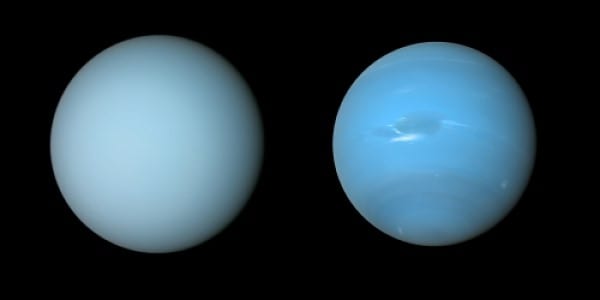Ever wondered why Neptune and Uranus have slightly different hues of blue despite having similar masses, sizes and with comparable atmospheric compositions? Well, wonder no more thanks to research led by Patrick Irwin from the University of Oxford.
By combining simulations with observations from Hubble, the NASA Infrared Telescope Facility as well as the Gemini North telescope, the team modelled the aerosol layers in the atmospheres of each planet, focussing on three haze layers that occur at different heights in the planets. This included a middle layer of haze particles where methane ice condenses to form a shower of methane snow that acts to pull the haze particles deeper into the atmosphere.
Given that Neptune has a more active, turbulent atmosphere than Uranus, they found that Neptune is more efficient at churning up more gaseous methane where it can then produce snow.
Given that this action removes the haze, it results in a thinner haze layer than on Uranus. The result being that Neptune appears bluer than Uranus. So, now you know.
Sound of the underground
Cities are well known for their extremely noisy characteristics, but could they also have their own unique magnetic footprint too? Researchers from the US and Germany think so and they used a network of sensitive magnetometers to collect magnetic field data over a four-week period in two US cities: Berkeley in California and the Brooklyn borough of New York City.
They discovered that several magnetic signatures were indeed specific to each city, and now hope that their system can be used to discover similar characteristics in other cities. On top of that they also found that Berkeley reaches a near-zero magnetic field activity during the night, while Brooklyn’s magnetic activity continues both day and night.
“Again, not too surprisingly, we discovered that New York never sleeps” says Vincent Dumont from Lawrence Berkeley National Laboratory.
And finally, if you fancy making some science-based cakes then check out these fun bakes from Sweetology, which include a volcano cake, a 3D Earth cake and a solar system decorating kit.
